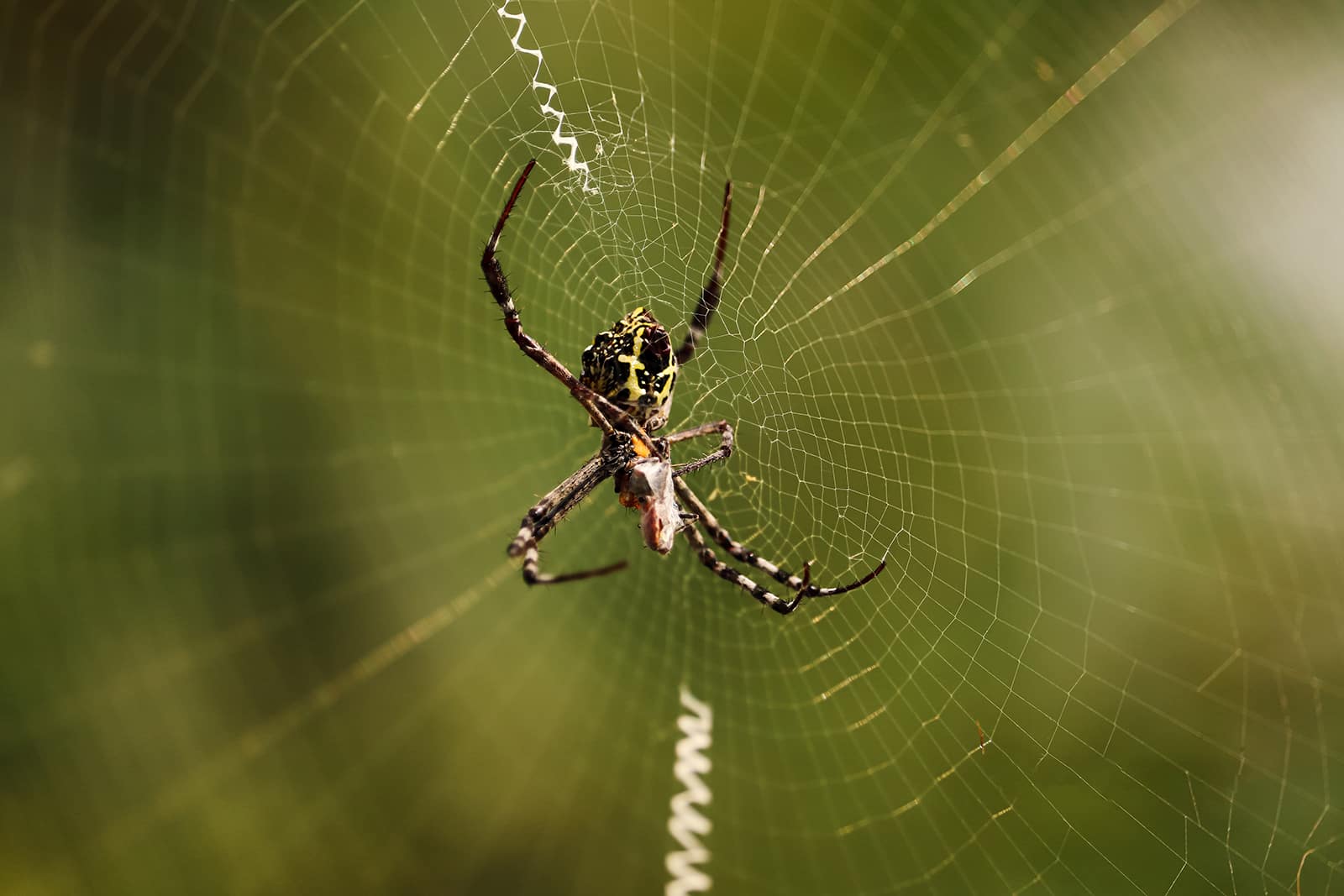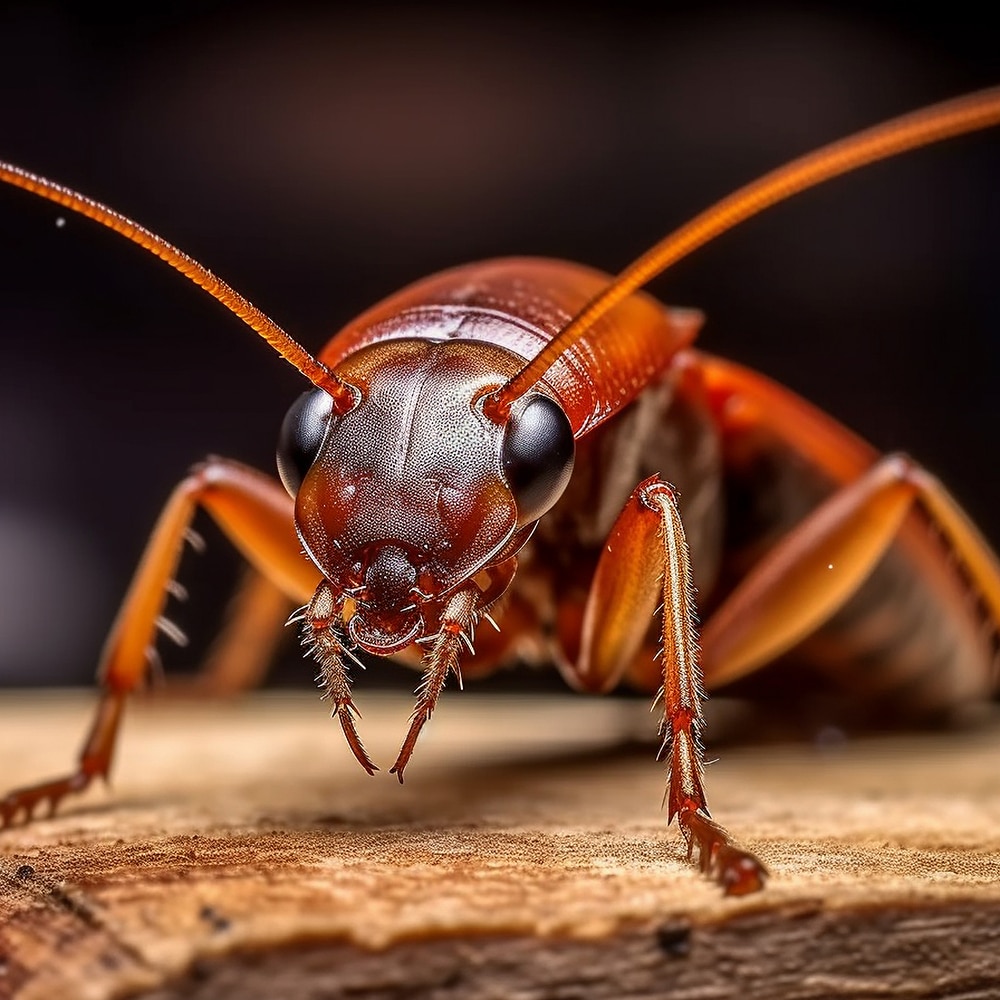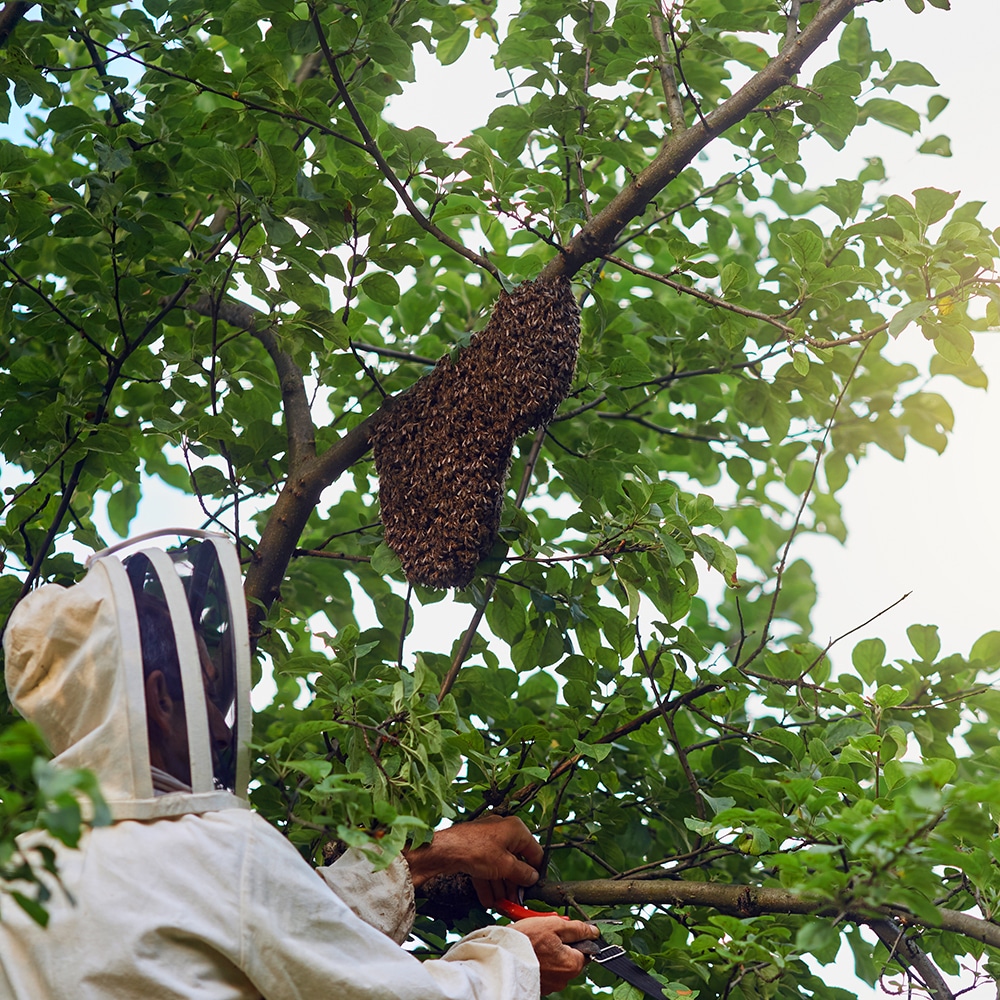
Why Do Spiders Come Back And Why
Why Do Spiders Come Back And Why On The Central Coast NSW. Responsive Proactive Solutions. Detail-focused for lasting results. Call Adam on 0431 222 894
Welcome to the ultimate guide in Basic Cockroach Identification for Homeowners. Discover how to identify these pesky invaders in your home. With the help of Vital Pest Control, you’ll learn how to spot the differences between roach types and know where they hide. Let’s dive in!
German vs American Roaches
German roaches are smaller and light brown, while American roaches are larger and reddish-brown. Knowing the difference helps target treatments. German roaches often infest kitchens, whereas American roaches prefer warm, damp areas like basements.
Egg Case Shapes
German cockroach egg cases are slender and brown, holding up to 50 eggs. American cockroach egg cases are larger and darker, containing about 16 eggs. Recognising these shapes can prevent future infestations.
Preferred Hiding Spots
Roaches love dark, moist areas. Common hiding spots include under sinks, behind fridges, and in cupboards. Regular checks in these areas can prevent a full-blown infestation.
Nocturnal Patterns
Roaches are mainly nocturnal. Spotting them during the day signals a large infestation. Nightly activity means they forage in your home while you sleep, so set traps before bedtime.
Antennae Length
Cockroaches have long, flexible antennae. They use them to sense their environment. Identifying long antennae can confirm a roach presence in your home.
Signs of Droppings
Roach droppings resemble black pepper or coffee grounds. Spotting these near food sources suggests an infestation. Clean regularly to deter roaches from nesting.
Checking Behind Appliances
Roaches favour hidden areas like behind appliances. Check behind stoves, fridges, and washing machines. Regular inspections help catch infestations early.
Knowing Typical Life Spans
German roaches live about 100 days, while American roaches can live up to 700 days. Understanding their life span aids in timing pest control efforts effectively.
Basic Cockroach Identification for Homeowners can safeguard your home from infestations. For reliable and trustworthy pest control on the Central Coast NSW, contact Vital Pest Control. Discover how we can help you today!

Homeowners in Central Coast NSW often encounter different cockroach species, with German and American roaches being the most common. Distinguishing between the two can aid in implementing effective pest control measures. Understanding their characteristics and behaviours is vital for keeping your home pest-free.
German Cockroaches
German cockroaches are small, light brown insects with two distinct dark stripes on their backs. They thrive in warm, humid environments and often infest kitchens and bathrooms. Known for rapid reproduction, their population can quickly escalate if not controlled. These roaches are primarily nocturnal, hiding in cracks and crevices during the day. Their presence often indicates a significant infestation, as they are skilled at concealing themselves. Effective control requires vigilant sanitation and targeted pest control methods.
American Cockroaches
American cockroaches are larger, reddish-brown insects, often found in basements, sewers, and other damp areas. Unlike their German counterparts, they can fly short distances. These roaches tend to enter homes seeking food and shelter, especially during warmer months. Although less prolific than German roaches, they can still pose significant health risks due to their ability to spread bacteria. Managing these pests involves sealing entry points and maintaining a clean, dry home environment.
Understanding the differences between German and American cockroaches is crucial for effective pest control in Central Coast NSW. Identifying the type of roach invading your home helps in choosing appropriate treatment strategies, ensuring your living space remains safe and hygienic.
Understanding the various egg case shapes of cockroaches is essential for effective pest control on the Central Coast of NSW. Cockroach egg cases, known as oothecae, vary in appearance and provide clues about the type of cockroach infestation you might be dealing with. Familiarity with these shapes can greatly aid homeowners in identifying and managing these pests early.
German Cockroach Egg Case
The German cockroach’s egg case is small, about 7 to 9 millimetres, and brown. It has a ridged appearance, typically containing 30 to 40 eggs. These egg cases are often found in warm, moist areas, such as under sinks or near kitchen appliances. Recognising these cases can help you tackle infestations before they grow.
American Cockroach Egg Case
American cockroach egg cases are larger, around 8 to 10 millimetres, and dark brown. These oothecae are often deposited in basements or crawl spaces. Each case holds around 15 eggs. Spotting these in hidden corners can indicate a need for immediate pest control action.
Oriental Cockroach Egg Case
Oriental cockroach egg cases are reddish-brown and slightly longer, measuring about 8 to 10 millimetres. These are less common indoors but may be found in damp basements. Each case generally holds up to 16 eggs. Identifying these can help prevent larger infestations.
Cockroaches can be a troublesome presence in many homes on the Central Coast NSW. Understanding their preferred hiding spots helps to effectively manage and control infestations. These resilient pests thrive in warm, dark places that offer access to food and water, making them adept at finding the most concealed areas in a home.
Kitchen Havens
Kitchens are prime real estate for cockroaches. They often hide under sinks, inside cabinets, and behind appliances like fridges and ovens. The combination of warmth, moisture, and food particles makes these spots irresistible. Regular cleaning and sealing of cracks can deter their presence.
Bathroom Retreats
Bathrooms provide another sanctuary for cockroaches. They particularly favour spaces under bathtubs, behind toilets, and in dark corners. The constant moisture from showers and sinks creates an ideal environment. Ensuring proper ventilation and fixing leaks can help keep these areas less inviting.
Basement and Laundry Lairs
Basements and laundry rooms often serve as cockroach hideaways due to their low-light and damp conditions. Piles of laundry and cluttered storage areas offer perfect cover. Regular decluttering and maintaining a dry environment can significantly reduce cockroach infestations in these rooms.
The Central Coast of NSW faces unique challenges with cockroach control, especially due to the nocturnal habits of these resilient pests. Understanding their nocturnal patterns is crucial for effective pest management in residential areas. Homeowners often encounter these pests during the night, making it essential to recognise their behaviour to implement preventive measures.
Nighttime Activity Explained
Cockroaches are primarily active at night, which helps them avoid predators. Their nocturnal nature means they search for food and water during these hours. This behaviour makes it difficult for homeowners to spot infestations until they become severe. Knowing this can aid in setting up traps and deterrents more effectively.
Preferred Habitats
During the night, cockroaches prefer dark, moist environments. Kitchens and bathrooms are common hotspots due to easy access to food and moisture. Inspecting these areas regularly at night can reveal hidden colonies. Homeowners can target these areas with specific treatments to disrupt the cockroaches’ comfort zones.
Timing Control Measures
Implementing control measures during the night can be more effective. Sprays, bait, and traps should be positioned strategically in high-activity zones. Nighttime inspections can guide placement, ensuring contact with these pests when they are most active. Adopting these strategies can help disrupt their nocturnal patterns, reducing infestations over time.
Identifying cockroaches in your home can be a daunting task. One of the key features to consider is the length of their antennae. This detail is crucial for effective pest control strategies on the Central Coast of NSW. Understanding these small details can make a significant difference in managing a cockroach infestation.
Importance of Antennae Length
Cockroach antennae serve as sensory tools, helping these pests navigate and locate food. The length of the antennae can indicate the species of cockroach you’re dealing with. Australian cockroaches, for instance, have notably long antennae compared to other species, which helps them adapt to diverse environments. Recognising these differences aids in selecting appropriate control methods.
Species-Specific Antennae Characteristics
Different cockroach species exhibit varying antennae lengths. German cockroaches generally have shorter antennae, making them adept at squeezing into tight spaces. Conversely, American cockroaches boast longer antennae, reflecting their preference for wide, open areas. Knowing these nuances helps in precisely targeting pest control treatments.
Practical Application for Homeowners
For homeowners, understanding antennae length can streamline the identification process. By closely observing these features, you can determine the specific species invading your home. This step is essential for devising an effective pest control plan, ensuring a safer, cockroach-free environment on the Central Coast of NSW.
Recognising cockroach droppings is crucial for homeowners on the Central Coast NSW aiming to maintain a pest-free home. Cockroach infestations can pose health risks, making early identification and control essential. Understanding the signs of droppings can help in detecting and addressing an infestation promptly.
Appearance and Size
Cockroach droppings often resemble ground coffee or black pepper. These small, cylindrical pellets vary in size, typically around 1 to 2 millimetres long. The size and shape can differ based on the cockroach species present, with larger species leaving more prominent droppings. Identifying these characteristics can guide effective pest control measures.
Common Locations
Droppings are usually found in areas where cockroaches are most active. Kitchens and bathrooms, due to their access to food and moisture, are common hotspots. Droppings may accumulate in dark corners, behind appliances, or in cupboards. Inspecting these areas regularly can reveal early signs of an infestation.
Health Indicators
The presence of droppings is not just a nuisance; it can indicate potential health risks. Cockroach droppings contain allergens and can trigger asthma or allergies in sensitive individuals. Noticing droppings can prompt necessary steps to safeguard family health, highlighting the importance of professional pest control services.
Homeowners on the Central Coast of NSW often face challenges with pest control, particularly in managing cockroach infestations. A crucial yet often overlooked step is checking behind appliances. This area can be a haven for pests due to warmth and food crumbs.
Why Behind Appliances?
Appliances like fridges and ovens generate heat, attracting cockroaches. They find these spots perfect for nesting and breeding. Food scraps and spills can accumulate unnoticed, providing a steady food source. Regular checks can prevent infestations from growing unnoticed.
How to Inspect Effectively
Start by moving appliances carefully, watching for cockroach droppings or live insects. Use a flashlight to inspect dark corners. Look for eggs or signs of damage. Clean up any food particles or spills immediately to reduce attraction. Consistent vigilance helps maintain a pest-free environment.
When to Seek Professional Help
If you notice a significant infestation or damage, it’s time to contact pest control professionals. They have the expertise and tools to address the problem effectively. Early intervention can save you from more extensive issues down the track.
Regular checks behind appliances not only help in identifying cockroach problems early but also maintain a cleaner, healthier home. Keeping these areas clean and monitored is vital for effective pest control on the Central Coast.
Understanding the life spans of common pests is crucial for effective pest control on the Central Coast NSW. Homeowners often face challenges with pests, especially cockroaches, and knowing how long these pests can live helps in planning control measures. By understanding their life cycle, homeowners can better manage infestations and prevent future problems.
Typical Life Span of Cockroaches
Cockroaches are resilient pests that can be tough to eliminate. On average, a cockroach can live for about a year. Their life cycle includes three stages: egg, nymph, and adult. The egg stage lasts around six to eight weeks, while the nymph stage can last several months. Once they reach adulthood, they can live for another six months. The warm, humid climate of the Central Coast NSW provides an ideal environment for their survival, making it essential for homeowners to address infestations promptly.
Factors Affecting Life Span
Several factors influence the life span of cockroaches. Access to food and water significantly extends their life. Inadequate sanitation and cluttered spaces offer perfect breeding conditions. Additionally, the use of ineffective pest control methods can inadvertently prolong their life. Homeowners should focus on eliminating these conditions to reduce the likelihood of infestations.
Effective Pest Control Measures
Implementing effective pest control measures can significantly reduce cockroach life spans. Regular cleaning, proper food storage, and sealing entry points are vital steps in prevention. Engaging professional pest control services can also provide targeted treatments that disrupt their life cycle. This approach ensures a long-term solution by preventing future infestations.
Roach infestations pose significant health risks, especially in homes on the Central Coast NSW. These pests are not just a nuisance; they can impact your wellbeing in various ways. Understanding these health risks can help homeowners take proactive steps in pest control.
Allergic Reactions and Asthma
Cockroaches produce allergens that can trigger reactions in sensitive individuals. Their droppings, saliva, and shed skin are common allergens, causing symptoms like sneezing, skin rashes, and watery eyes. Asthma sufferers may experience intensified symptoms, leading to severe attacks.
Food Contamination
Cockroaches often scurry across kitchen surfaces, contaminating food supplies. They carry bacteria like Salmonella and E. coli, which can spread onto food and utensils. Ingesting contaminated food may result in food poisoning, causing nausea, vomiting, or diarrhoea.
Spread of Pathogens
Roaches are known carriers of various pathogens. They can transport harmful bacteria and viruses from dirty environments into your home. This transfer can lead to infections and diseases, compromising the health of household members.
Psychological Distress
The presence of cockroaches can also cause psychological distress. The fear or disgust associated with these pests can lead to stress and anxiety. Ensuring a roach-free home is crucial for maintaining a comfortable living environment.
Cockroaches are notorious for their resilience, especially in the diverse climate of the Central Coast NSW. Understanding how these pests survive in harsh conditions can aid homeowners in effective pest control. This knowledge is vital for curbing infestations and maintaining a healthy home environment.
Adaptation to Extreme Temperatures
Cockroaches are adept at surviving temperature extremes. In the Central Coast’s fluctuating climate, they can thrive in both heat and cold. Their ability to regulate body temperature allows them to inhabit warm kitchens and chilly basements. This adaptability makes them formidable invaders in any household.
Water and Food Scarcity
In times of scarcity, cockroaches exhibit incredible resourcefulness. They can survive weeks without food and days without water, making them tough to eradicate. Cockroaches scavenge for sustenance, feeding on soap, paper, and even glue. Their ability to find nourishment in unexpected places helps them persist through tough conditions.
Shelter Finding Abilities
Finding shelter is crucial for cockroach survival. They exploit cracks, crevices, and other hidden spots within homes. This knack for seeking out protective spaces ensures they remain undetected and safe from environmental threats. Homeowners must seal entry points and reduce clutter to limit these hiding spots.
When you flick on the lights and cockroaches scatter, it can be unsettling. This behaviour is common and understanding why it happens can help homeowners on the Central Coast NSW manage infestations more effectively. Cockroaches are nocturnal insects, meaning they are most active at night. They prefer dark, moist environments where they can find food and water. The sudden exposure to light disrupts their sense of safety, prompting them to flee.
Survival Instincts
Cockroaches have evolved to be highly adaptable, relying on their survival instincts to escape threats. When lights turn on, they perceive this as a danger. Their instinct is to find cover quickly to avoid predators. This behaviour is a natural response to ensure their survival, making them challenging pests to control.
Speed and Agility
Cockroaches are incredibly agile and fast, traits that aid in their escape when startled. They can quickly navigate through small cracks and crevices. This agility makes it difficult for homeowners to catch or eliminate them. Understanding their speed helps in creating effective pest control strategies.
Importance of Pest Control
Effective pest control is vital for managing cockroach infestations. By addressing hiding spots and food sources, homeowners can reduce the likelihood of encountering these pests. Vital Pest Control on the Central Coast NSW offers targeted solutions to keep homes cockroach-free. Regular inspections and treatments can prevent these nocturnal run-ins.
Identifying roach runways is crucial for effective pest control on the Central Coast NSW. Cockroaches are elusive creatures, often hiding in dark and damp places. Understanding their pathways can help homeowners take strategic action to reduce infestations. This guide will explore the common signs and areas where cockroach runways are typically found, helping you to target pest control efforts more effectively.
Common Signs of Roach Runways
Roach runways often exhibit certain tell-tale signs. Look for droppings resembling coffee grounds or black pepper in areas where cockroaches frequent. You might also find smudge marks along walls or surfaces. These are created by the oily bodies of the cockroaches rubbing against surfaces. Additionally, a musty odour may linger in areas with high cockroach activity, indicating a well-trodden path.
High Traffic Areas
Cockroaches typically travel along walls and edges. Focus your search in kitchens and bathrooms, especially under sinks and behind appliances. These areas provide both food and moisture, making them ideal for cockroach runways. Also, consider checking storage spaces like pantries and cupboards, where crumbs and spills might attract these pests. Regularly inspecting these areas can help pinpoint cockroach paths.
Effective Monitoring Techniques
Using sticky traps is a practical way to identify cockroach runways. Place traps near suspected pathways to catch these pests in action. Monitoring the traps regularly will reveal which areas have higher traffic. This information is invaluable for targeting pest control measures. By focusing on these runways, you can disrupt the cockroach’s habitat, reducing their numbers effectively.
Mislabeling insects is a common issue for homeowners, especially when it comes to identifying cockroaches. This can lead to ineffective pest control solutions, particularly on the Central Coast of NSW, where diverse insect populations thrive. Understanding the differences between cockroaches and other insects is crucial for effective pest management.
Stick Insects Versus Cockroaches
Stick insects often get confused with cockroaches due to their elongated bodies. However, stick insects have thin, twig-like appearances and are harmless. Cockroaches, in contrast, have broader bodies and thrive in dark, moist environments. Misidentifying these can lead to unnecessary panic and incorrect pest control measures.
Beetles and Cockroach Confusion
Beetles are another group often mistaken for cockroaches. With their hard exoskeletons and similar size, it’s easy to see why. Yet, beetles typically have distinct ridged backs and are less likely to scurry away when exposed to light. Accurate identification is essential to avoid applying wrong treatments.
Water Bugs Mistaken for Cockroaches
Water bugs, often found near water sources, are sometimes labeled as cockroaches. Though similar in appearance, water bugs are generally larger and prefer living outdoors. Cockroaches, however, are more likely to invade homes. Proper identification ensures the right pest control strategy, avoiding ineffective treatments.
Overwintering cockroaches on the Central Coast NSW pose a unique challenge for pest control. These pests seek refuge indoors as temperatures drop, leading to increased infestations in homes. Understanding their overwintering habits can help you manage these unwelcome guests effectively.
Seeking Shelter Indoors
As the weather cools, cockroaches look for warm, sheltered spots inside homes. Basements, attics, and kitchens become prime locations due to their warmth and access to food. Cracks in walls and gaps around windows provide entry points, making it crucial to seal these areas to deter entry.
Reduced Activity Levels
During winter, cockroaches enter a state of reduced activity. They slow down their metabolism, often clustering together to conserve warmth. Despite this, they remain a nuisance, and sightings may occur in kitchens or bathrooms where moisture and food are accessible.
Effective Pest Control Strategies
Prevention is key. Regularly clean and declutter to eliminate food sources and hiding places. Use baits and traps strategically. Professional pest control services offer targeted treatments that address overwintering roaches, ensuring your home remains pest-free throughout the cooler months.
When dealing with cockroach issues on the Central Coast NSW, determining the extent of the infestation can be daunting. One approach that can help is professional lab testing. This method offers precise insights into the type and severity of the cockroach problem, enabling targeted pest control strategies.
Identifying Cockroach Species
Professional lab testing is crucial in identifying the specific cockroach species invading your space. Central Coast homes can host various cockroach types, each requiring different control methods. Accurate identification allows pest control services to tailor their approach, ensuring efficient and effective eradication. This step is vital as it helps avoid using broad-spectrum pesticides unnecessarily.
Understanding Infestation Levels
Lab testing also helps assess the scale of the infestation. By analyzing samples, experts can determine how widespread the problem is. This information is beneficial for planning the most effective treatment plan. Knowing the infestation level ensures that the pest control efforts are neither over nor underdone, saving time and resources.
Health and Safety Assurance
Ensuring the health and safety of residents is a top priority. Lab testing can detect potential allergens or pathogens that cockroaches might carry. Understanding these risks allows homeowners and pest control professionals to implement appropriate safety measures, protecting the household while addressing the pest problem effectively.
Please leave your details in the form and we will call you back the same day.
So that we can process your enquire efficiently please leave as many details as possible and upload any relevant images. (.jpg and .png format)

Why Do Spiders Come Back And Why On The Central Coast NSW. Responsive Proactive Solutions. Detail-focused for lasting results. Call Adam on 0431 222 894

Building a Long Term Residential Pest Protection Plan For Home Owners On The Central Coast NSW. Responsive Proactive Solutions. Detail-focused for lasting results. Call Adam on 0431 222 894

How to Protect Your Home from Wasp Infestations On The Central Coast NSW. Responsive Proactive Solutions. Detail-focused for lasting results. Call Adam on 0431 222 894